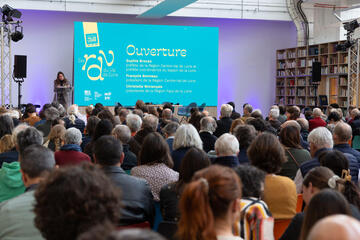Meeting for its 41st session, held in Krakow in early July, UNESCO’s World Heritage Committee decided to incorporate Château de Chenonceau and its surroundings, along with the outstanding landscaped site, the Eperon de Marnay, into the Loire Valley World Heritage site.
The request, which was presented by France, is based on a submission prepared by the State’s services with the help of Mission Val de Loire.
Château de Chenonceau is integrated into the Loire Valley UNESCO World Heritage site (Centre-Loire Valley Prefecture)
Minor modification to the property’s limits
This brings a slight rectification to the initial inscribed perimeter, without modifying the site’s outstanding universal value (OUV).
The requested modification increases the Loire Valley cultural landscape World Heritage site’s surface area by just 0.7%.
Château de Chenonceau and its surroundings
Château de Chenonceau is one of the great “Loire Châteaux” and visitors could not understand why it was not originally included in the inscribed site.
It is the very embodiment of the architectural blossoming that typified the Renaissance in the extensive and internationally renowned ensemble that is the Loire Valley.
Besides the audacity of a structure that spans the Cher, Chenonceau is also characterised by a remarkable collection of furniture, tapestries and paintings, illustrating the successive periods from the 16th to the 18th centuries.
Owned by the Menier family, Chenonceau, along with Chambord, is the Loire Valley’s best known and most visited château. It provides a warm welcome and organises tours much appreciated each year by close to 900,000 visitors, 40% of whom are foreign and include 150 nationalities.
Château de Chenonceau
Built in the first quarter of the 16th century, and then enlarged, embellished and provided with gardens in the second half of the 16th century, the Château embodies the Loire Valley’s architectural blossoming during the Renaissance, in the two periods generally known as the First and Second Renaissances.
Eperon de Marnay
When the request to modify the property’s limits was made, it also seemed a good idea to rectify an oversight regarding the Eperon de Marnay (Azay-le-Rideau) so as to incorporate the 360° panoramic viewpoint as well as the lower section of the interfluve between the Indre and the Loire.
Marnay spur
The Indre joins the Loire Valley via a gap in the hillside in the municipality of Azay-le-Rideau downstream from Lignières-de-Touraine, creating a gently sloped spur. The river then joins the Loire at the confluence located some ten kilometres downstream at Le Néman, in the municipality of Avoine.




![Nouvelles Renaissance(s] 2023](/var/storage/images/val-de-loire-refonte/dossier-de-parametrage/pied-de-page/nouvelles-renaissance-s-2023/517479-13-fre-FR/Nouvelles-Renaissance-s-2023_image_largeur220.png)


 Lettre d'information
Lettre d'information
 Facebook
Facebook
 Flickr
Flickr
 Podcloud
Podcloud
 Dailymotion
Dailymotion
 Box
Box
 Slideshare
Slideshare
 Diigo
Diigo

